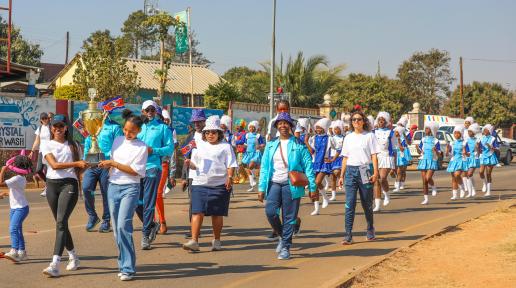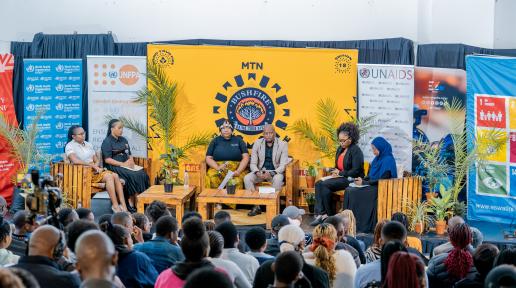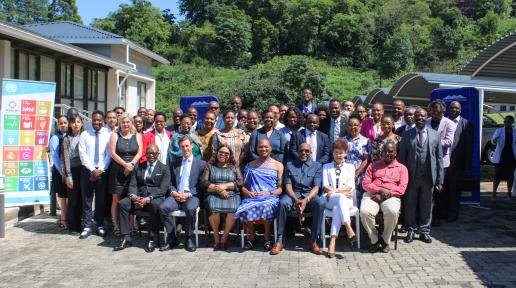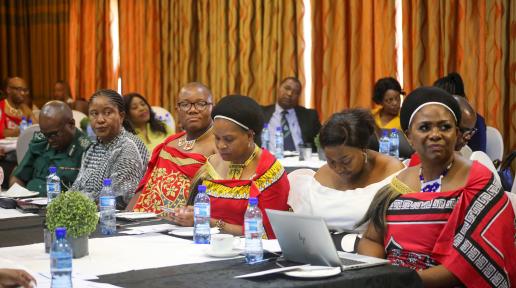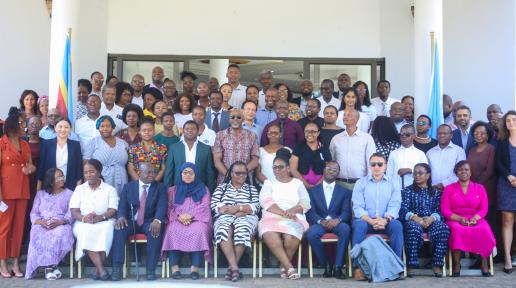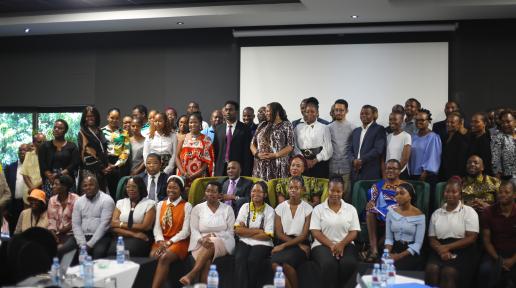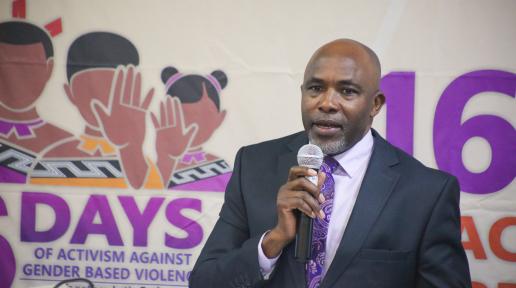Story
14 November 2025
Building the Future Together: Eswatini and the UN Advance a Shared Agenda for Prosperity
The UN delegation comprised officials from Agencies, Funds and Programmes with a physical presence in the Kingdom of Eswatini, including UNDP, UNFPA, UNICEF, WHO, WFP, UNAIDS, FAO, IOM, UNESCO, and IFAD. The meeting was also attended by the Rt. Hon. Prime Minister Russell Dlamini and the Minister for Foreign Affairs and International Cooperation, Senator Pholile Dlamini-Shakantu.The meeting presented a opportunity for the UN to brief His Majesty on its work over the last five years under the 2021-2025 cooperation agreement, and on the strategic direction of the new cooperation framework for 2026-2030. The briefing meeting took place as the United Nations marks its 80th anniversary globally amid a complex global landscape shaped by the accelerating impacts of climate change, rising geopolitical tensions, constrained development financing, and a declining sense of trust in multilateralism. Against this backdrop, the visit provided an important opportunity for the United Nations to reaffirm its steadfast commitment to the Kingdom of Eswatini and to the advancement of sustainable and inclusive development for all emaSwati. In commemoration of the 80th anniversary, the UN presented His Majesty with a certificate of appreciation in recognition of His Majesty’s and Eswatini’s contribution to global cooperation and solidarityIn his remarks to His Majesty, Mr. Wachira conveyed the United Nations’ deep appreciation for the Kingdom’s continued collaboration through the leadership of His Majesty King Mswati III. He highlighted the joint progress achieved over the past five years in key areas such as economic diversification, gender equality, youth empowerment, health, education, and climate resilience.Mr. Wachira commended Eswatini’s emergence as a regional leader in sustainable finance through innovative frameworks such as the Green Taxonomy and Priority Sector Lending, which are unlocking green investments and driving inclusive growth. He further acknowledged the adoption of the 2023 National Gender Policy and the growing representation of women in Parliament as significant milestones in advancing equality and empowerment. His Majesty King Mswati III recounted the origins of the UN in 1945 following the collapse of the League of Nation and reaffirmed Eswatini’s commitment to multilateralism as reflected in its continued advocacy for global reforms and participation in all important global forums. His Majesty expressed appreciation for the enduring partnership between the Kingdom of Eswatini and the United Nations, noting the tangible benefits this collaboration continues to bring to the lives of emaSwati. His Majesty expressed pride in Eswatini’s continued global leadership in the HIV response, as well as national progress in digital education, youth employment, and climate action, including the Kingdom’s early submission of its third Nationally Determined Contribution (NDC 3.0) under the Paris Agreement. He reiterated the call for a fair and equitable international systems that provides an equal opportunity for developing countries such as Eswatini to access development finance.Over the past five years, the UN–Eswatini partnership has mobilized more than E1.8 billion in support of national priorities, serving as an investment in people, progress, and shared prosperity that underscores the strength and value of multilateral cooperation.Looking ahead, the United Nations and His Majesty’s Government, led by Prime Minster Dlamini, will on 30 November 2025 officially launch the UN Sustainable Development Cooperation Framework for2026–2030, which will serve as the blueprint guiding joint efforts to advance Eswatini’s transformation agenda in alignment with the global Sustainable Development Goals (SDGs) and Eswatini’s National development priorities.



